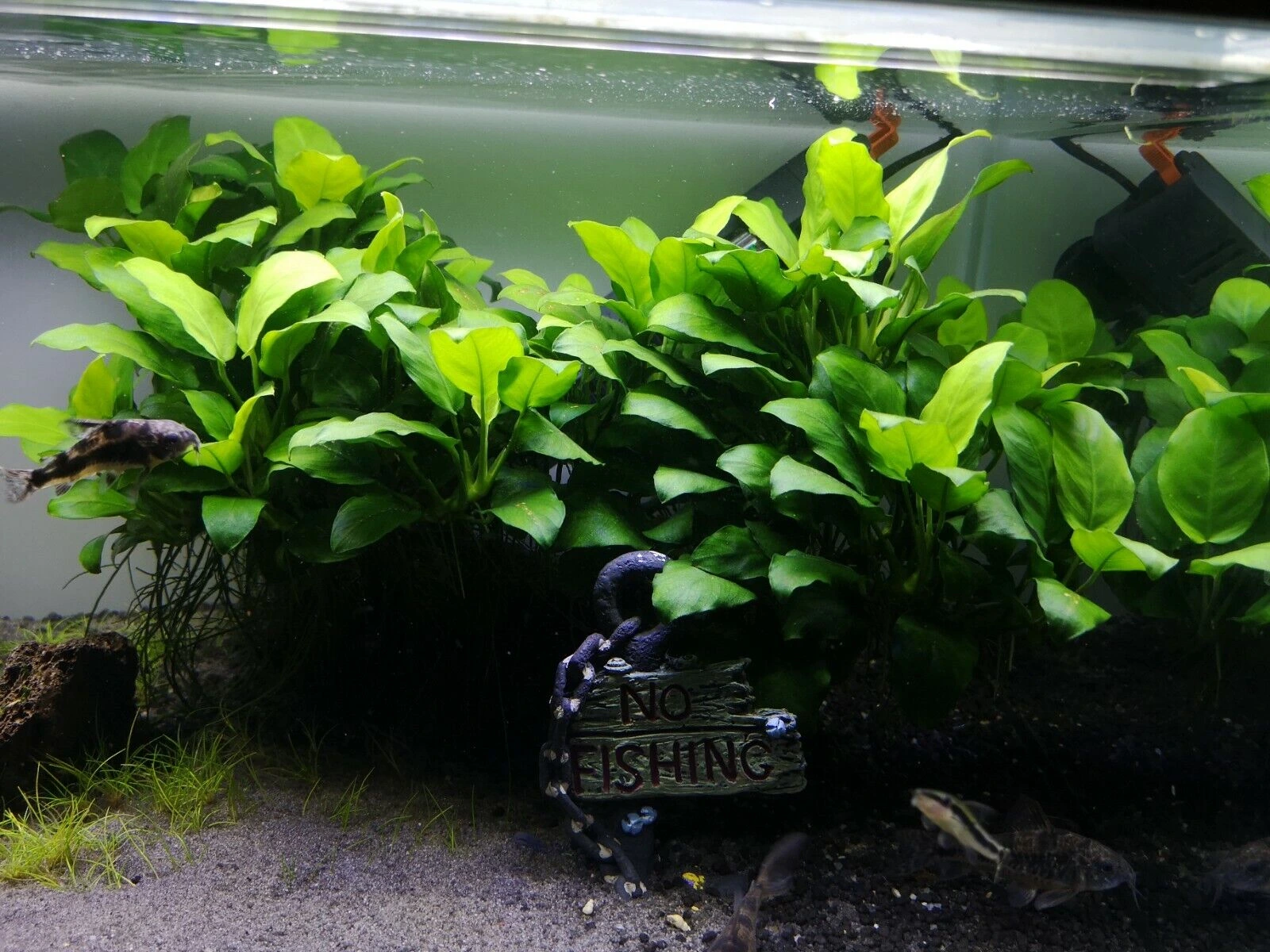Introduction
Anubias, a widely cherished genus of aquatic plants, has captured the hearts of aquarium and terrarium enthusiasts. Recognized for their captivating foliage and adaptability to diverse conditions, Anubias plants have secured a prominent place in the hobbyist’s repertoire. This article delves into the differences among the 17 most common Anubias varieties used as freshwater aquarium plants, shedding light on their unique characteristics.
Anubias Care
Lighting: Low-tech and low-lighting aquariums are perfect for most Anubias plants because of their hardiness and undemanding nature. On the other hand, if they have higher lighting, they will grow more robustly and thrive with more colorful foliage. High light conditions result in more compact leaves for most Anubias varieties. However, beware of algae on Anubias leaves when utilizing high lighting.
Placement: Anubias, classified as an epiphytic plant, should not be submerged in the substrate, unlike other plants. The rhizome, from which all leaves and roots emerge, is crucial for the plant’s vitality and allows it to receive nutrients from the water column instead of the substrate. If the rhizome is buried or positioned in a manner that obstructs it, it can lead to rotting and the eventual demise of the plant.
To appropriately cultivate Anubias, one should insert them into crevices of hardscape, affix them to rocks or aquatic wood using string or super glue, allow them to float at the tank’s surface, or use plant weights to anchor them and prevent floating.
Water conditions: Because of its extreme tolerance, the Anubias plant species can thrive in a variety of water conditions, including pH levels ranging from 6.0 to 8.0. Maintaining stable water parameters and avoiding sharp variations in pH and temperature are crucial.
Occasionally fertilizing Anubias with a high-quality aquarium plant fertilizer is beneficial, even though it is a slow-growing plant. The plant will receive the vital nutrients it needs for strong development and vivid color as a result.
Popular Anubias Varieties
1. Anubias Barteri
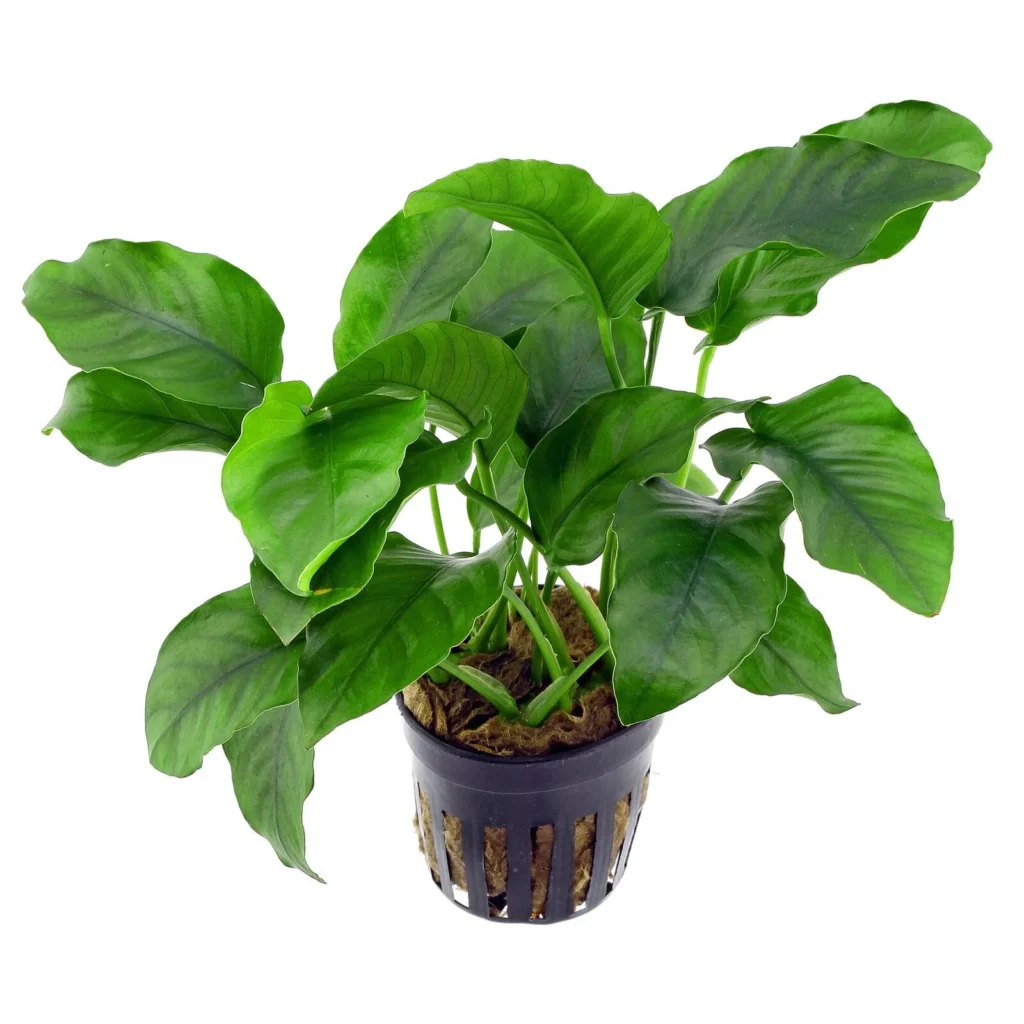
- Height: Varied, typically 6-12 inches.
- Growth Rate: Slow to moderate.
- Features: Broad, dark green leaves in a rosette pattern. Known for hardiness and adaptability to diverse water parameters.
Anubias Barteri is a classic choice, and one of the most popular types of Anubias seen in planted tanks. It stands out for its hardiness, showcasing broad, dark green leaves in a rosette pattern. One of the best aquatic plants for beginners, it thrives across a broad spectrum of water parameters.
2. Anubias Nana
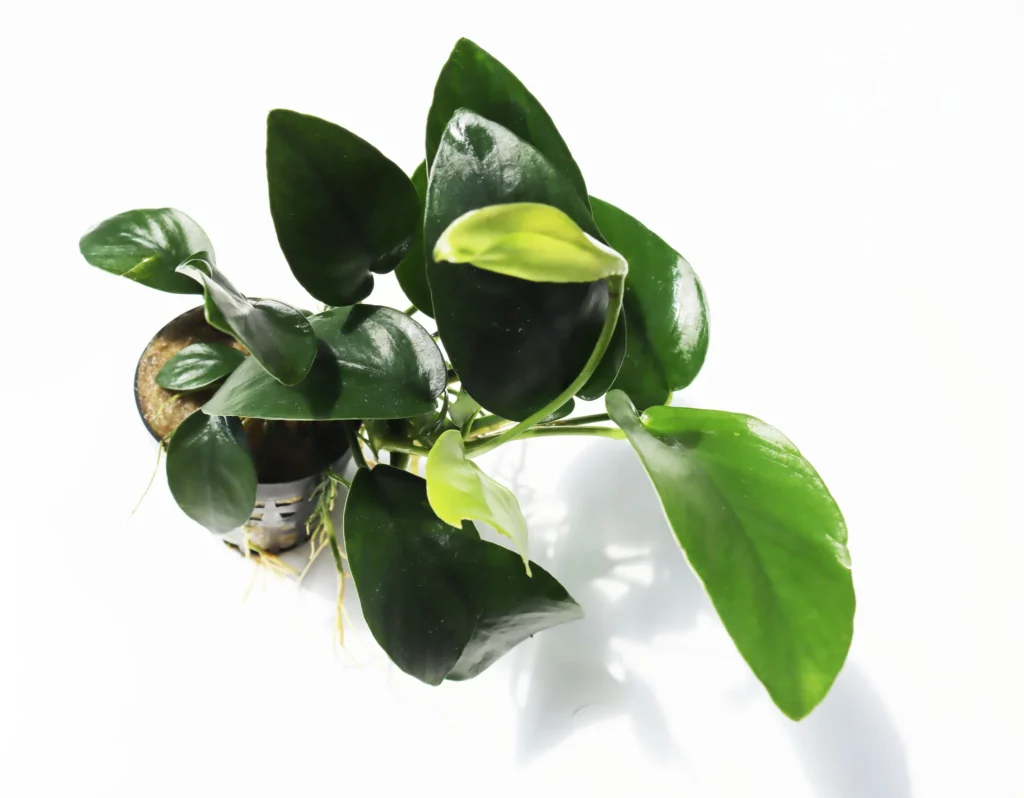
- Height: 2-6 inches.
- Growth Rate: Slow.
- Features: Compact size, thick dark green leaves. Ideal for small aquariums or as a foreground plant in larger setups.
Anubias Nana stands out as a favored aquatic plant among hobbyists. For those venturing into planted tanks and eager to embark on their first growth experience, this plant makes an excellent choice. Its adaptability and straightforward growth make it a resilient species, capable of thriving in diverse water conditions.
3. Anubias Congensis
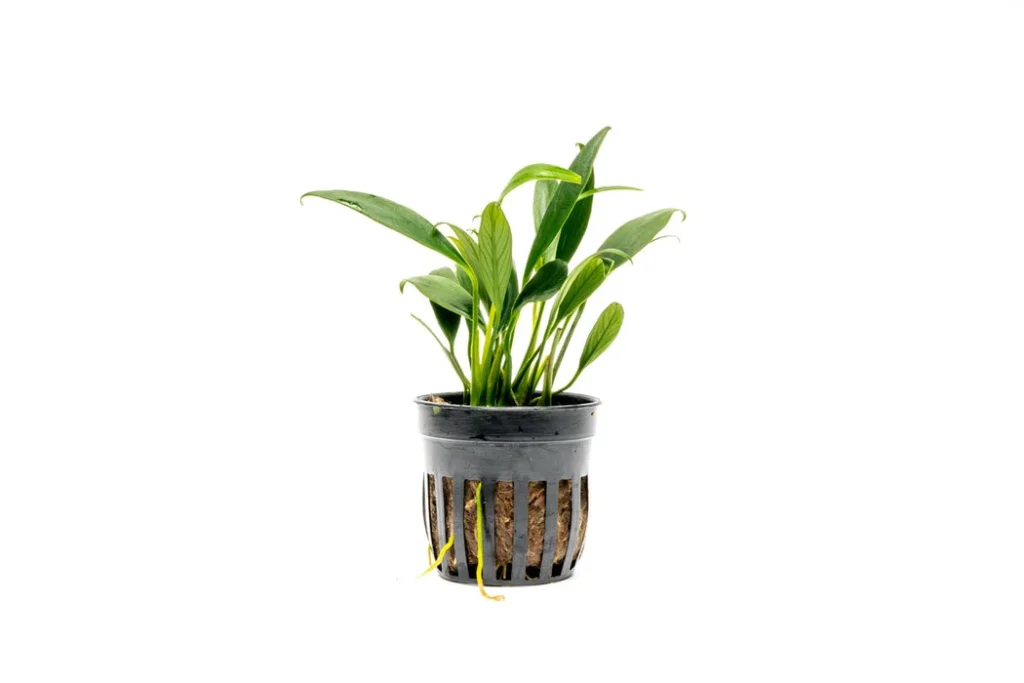
- Height: 12-18 inches.
- Growth Rate: Moderate.
- Features: Larger, lance-shaped leaves. Suited for larger aquariums as a background plant, requires higher lighting and nutrient levels.
With long, lance-shaped leaves, Anubias Congensis caters to larger aquariums, requiring slightly elevated lighting and nutrient levels. Its moderate growth makes it suitable for background planting.
4. Anubias Coffeefolia
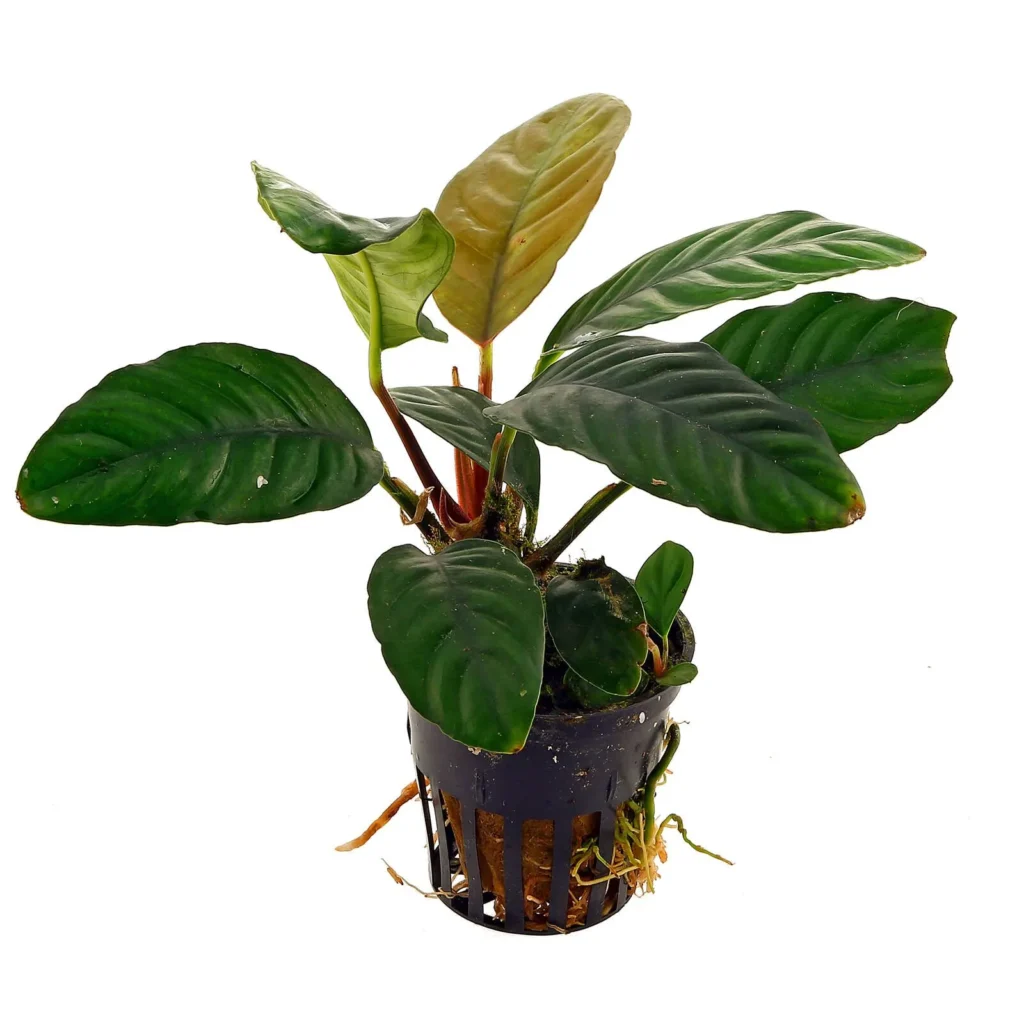
- Height: 6-8 inches.
- Growth Rate: Slow.
- Features: Unique textured leaves resembling coffee beans. Dark green coloration with a reddish-brown tint.
Anubias Coffeefolia introduces a visual treat with textured leaves resembling coffee beans, featuring a dark green coloration with a reddish-brown tint.
5. Anubias Hastifolia
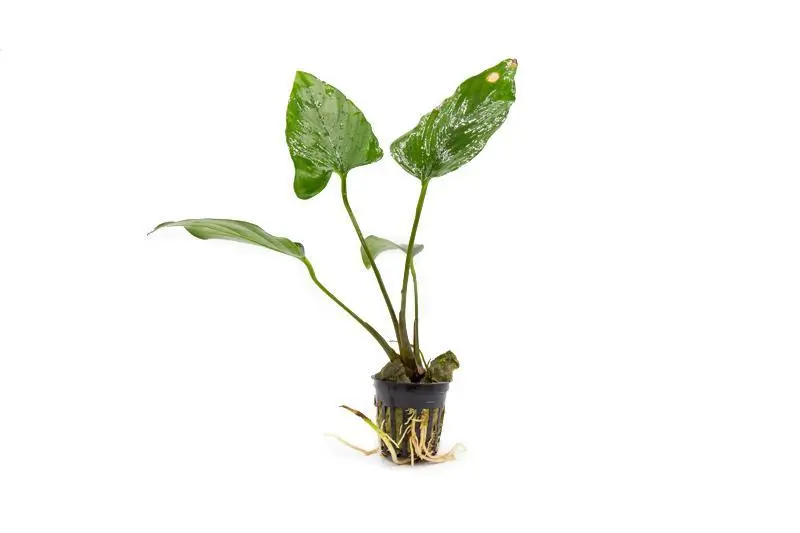
- Height: 8-12 inches.
- Growth Rate: Slow to moderate.
- Features: Arrow-shaped glossy, dark green leaves.
Anubias Hastifolia catches the eye with its arrow-shaped glossy, dark green leaves, fitting seamlessly into midground or background positions in aquariums and terrariums.
6. Anubias Lanceolata

- Height: 12-18 inches.
- Growth Rate: Moderate.
- Features: Tall and slender with lance-shaped leaves.
Anubias Lanceolata, characterized by tall and slender lance-shaped leaves, serves as an excellent choice for creating vertical accents in aquascapes, thriving in moderate lighting.
7. Anubias Afzelii
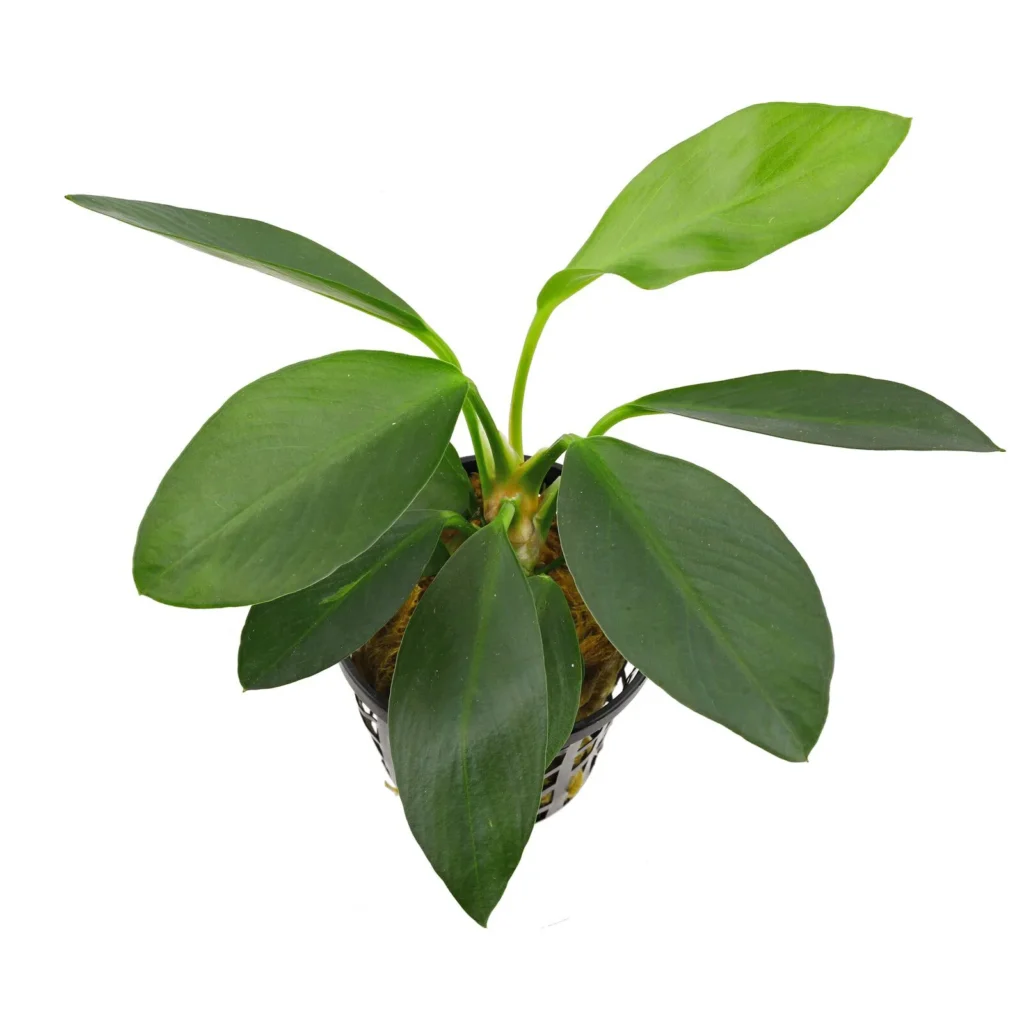
- Height: 4-8 inches.
- Growth Rate: Slow.
- Features: Compact with elongated, pointed leaves.
Compact and adorned with elongated leaves, Anubias Afzelii is a versatile option suitable for small to medium-sized aquariums, serving as a foreground or midground plant.
8. Anubias Barteri Var. Nana Petite
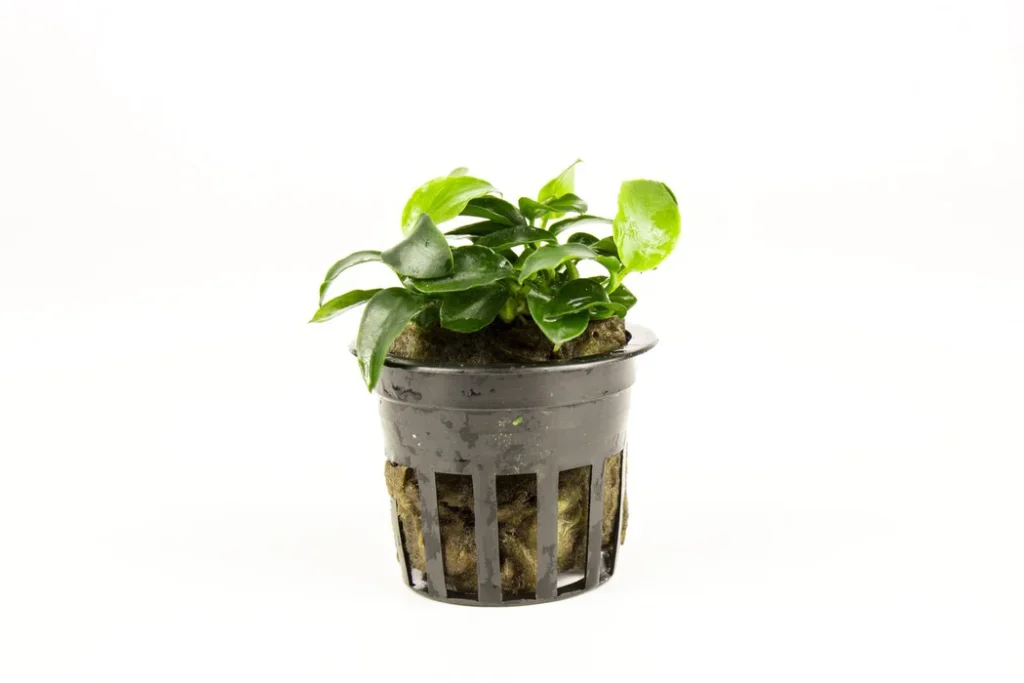
- Height: 2-4 inches.
- Growth Rate: Very slow.
- Features: Dwarf variety with tiny leaves and compact growth.
A dwarf variation of Anubias Nana, the Petite variety boasts tiny leaves and a compact growth habit, making it an ideal choice for nano aquariums or intricate detailing in larger setups.
9. Anubias Frazeri
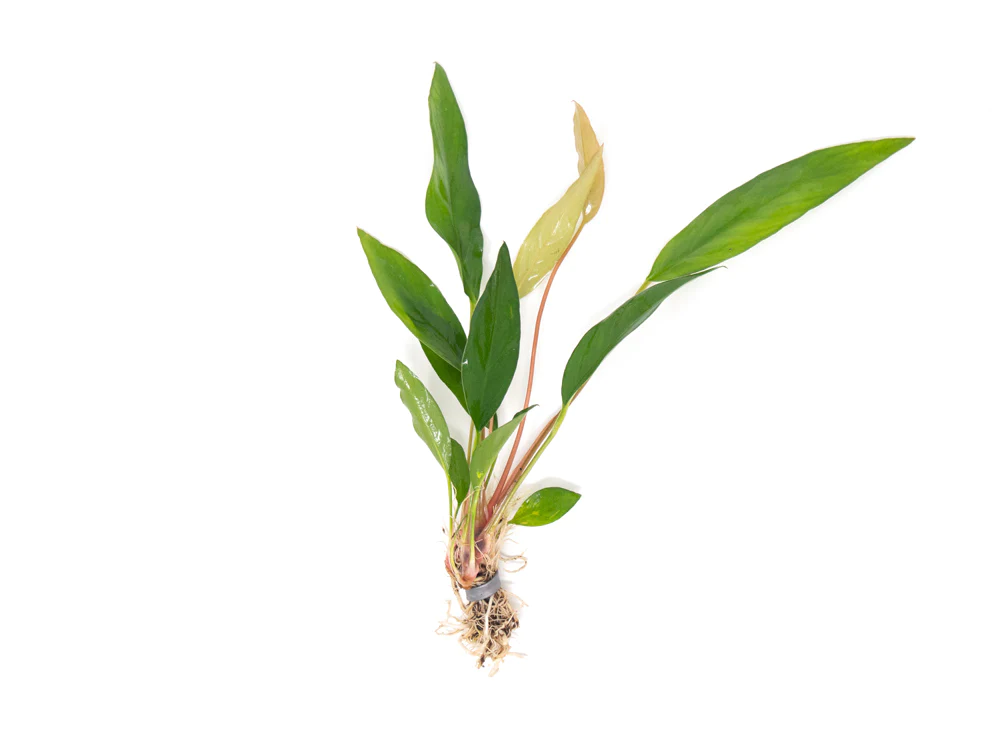
- Height: 8-12 inches.
- Growth Rate: Moderate to fast.
- Features: Rare variety with elongated leaves and a wavy texture. Requires higher lighting and nutrient supplementation.
The rare Anubias Frazeri features elongated leaves with a wavy texture, demanding higher lighting levels and regular nutrient supplementation for optimal growth.
10. Anubias Minima
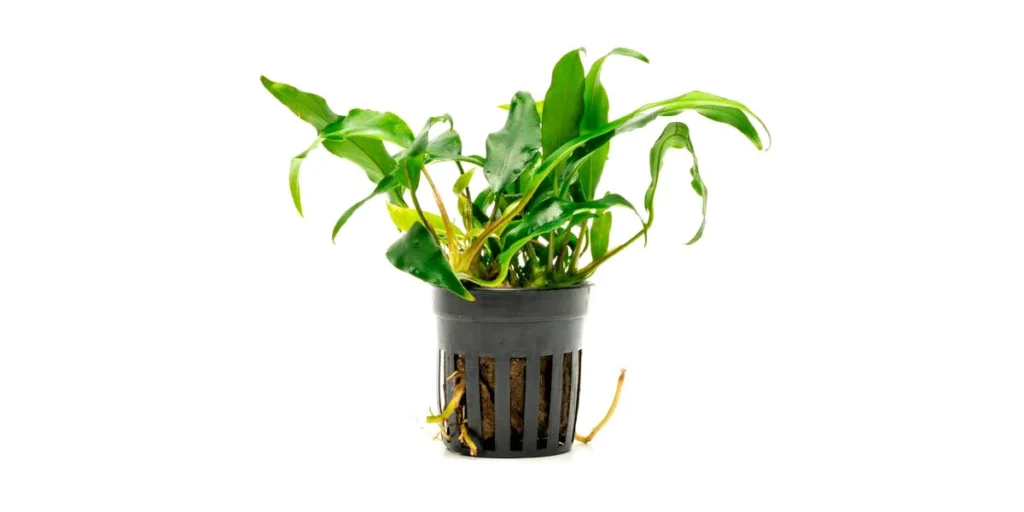
- Height: 2-4 inches.
- Growth Rate: Slow.
- Features: Miniature variety with small, round leaves growing in dense clusters. Perfect for small aquariums or terrariums.
Perfectly scaled for small aquariums or terrariums, Anubias Minima presents miniature clusters of small, round leaves, creating a lush and compact appearance.
11. Anubias Gracilis

- Height: 6-10 inches.
- Growth Rate: Moderate.
- Features: Characterized by slender, elongated leaves. Anubias Gracilis is suitable for midground or background placement and adds a graceful touch to aquascapes.
With its slender, elongated leaves, Anubias Gracilis adds a touch of grace to aquariums, making it an excellent choice for midground or background placement. Its moderate growth rate ensures a balanced and elegant aesthetic in aquascapes.
12. Anubias Barteri Var. Glabra
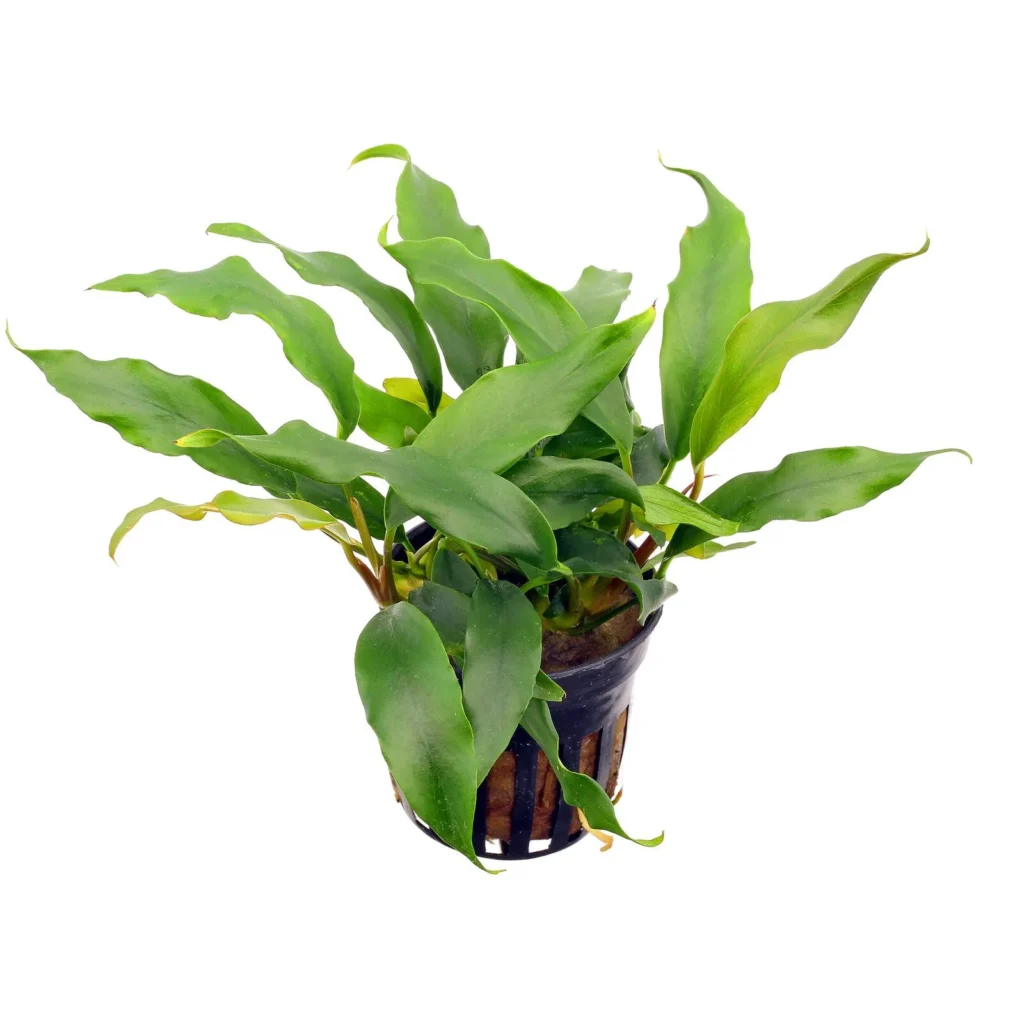
- Height: 4-8 inches.
- Growth Rate: Slow to moderate.
- Features: This variety is distinguished by its narrower leaves compared to Anubias Barteri. It offers a unique look and is well-suited for various aquarium sizes.
Anubias Barteri Var. Glabra stands out with its narrower leaves compared to the standard Barteri, providing a unique and distinctive appearance. Its slow to moderate growth makes it an intriguing addition suitable for various aquarium sizes.
13. Anubias Angustifolia
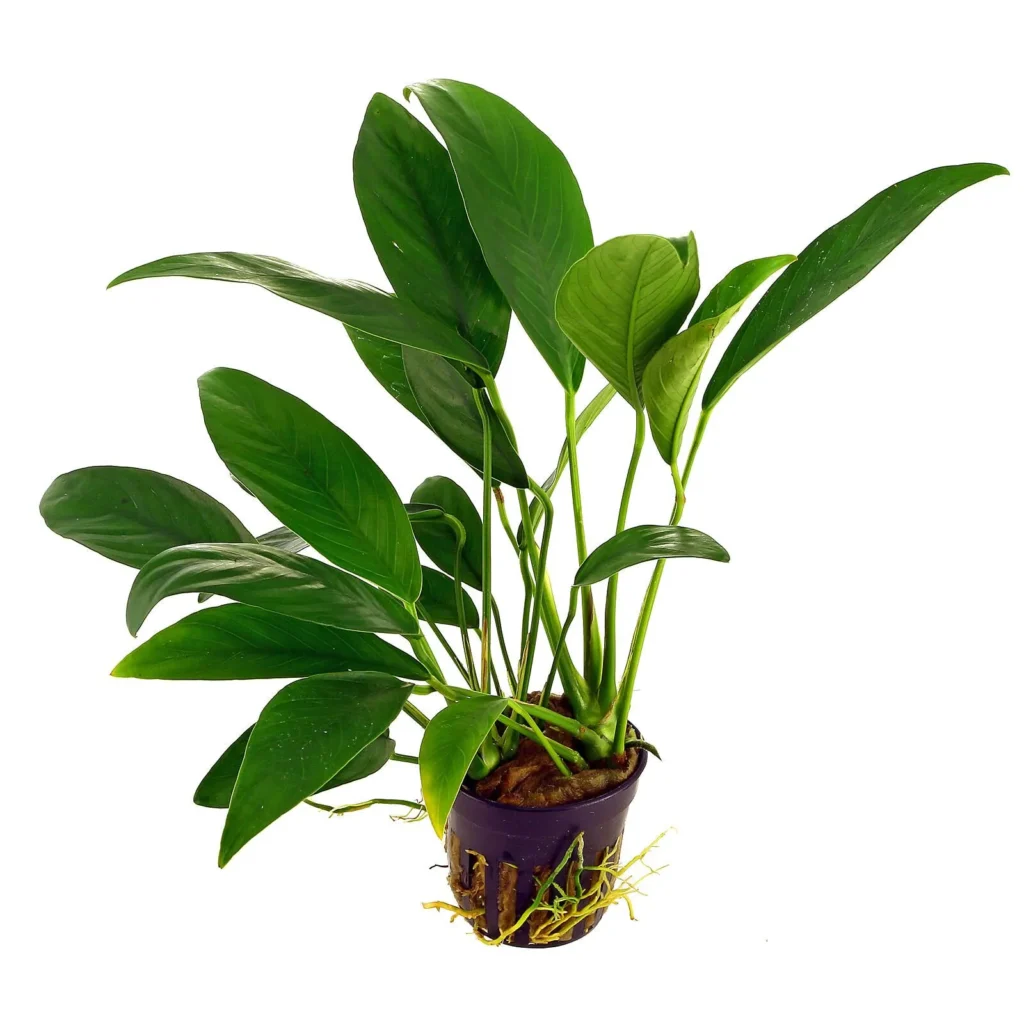
- Height: 8-12 inches.
- Growth Rate: Moderate.
- Features: Anubias Angustifolia features long, narrow leaves and is suitable for midground or background placement. It adds a sense of height and elegance to aquatic setups.
Featuring long, narrow leaves, Anubias Angustifolia brings a sense of height and elegance to aquarium setups. With a moderate growth rate, it is an ideal choice for creating vertical accents in both midground and background positions.
14. Anubias Heterophylla
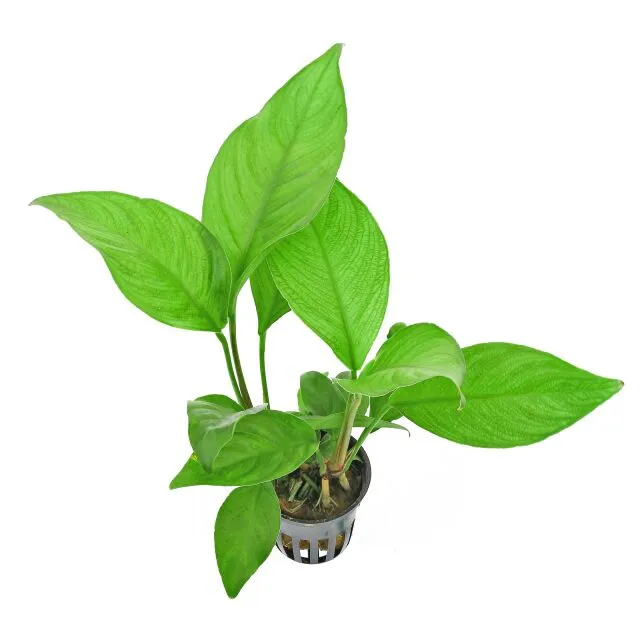
- Height: 6-12 inches.
- Growth Rate: Slow to moderate.
- Features: With variable leaf shapes on the same plant, Anubias Heterophylla adds visual interest. It adapts well to different lighting conditions and is suitable for midground or background use.
Anubias Heterophylla offers visual interest with variable leaf shapes on the same plant. Adapting well to different lighting conditions, this variety is versatile and suitable for midground or background use, contributing to a captivating and dynamic aquascape.
15. Anubias Nana Pinto
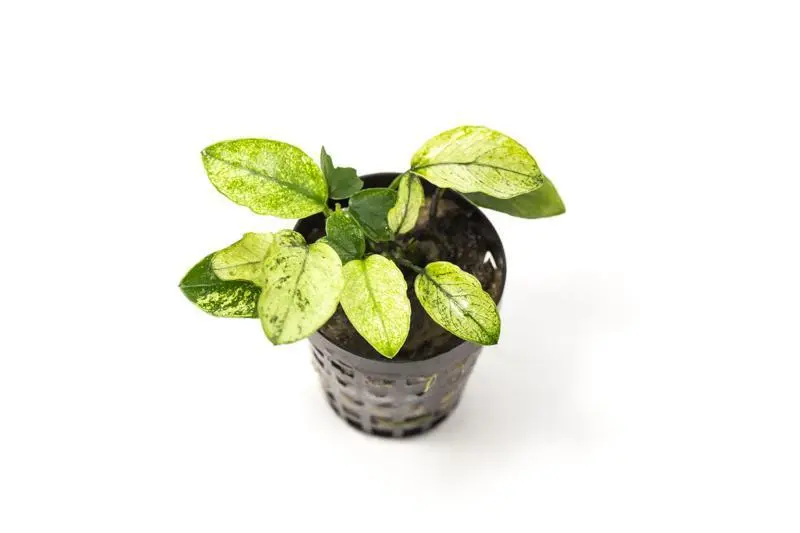
- Height: 3-6 inches.
- Growth Rate: Slow.
- Features: Anubias Nana Pinto is characterized by its petite size and distinctive variegated leaves with a mix of light and dark colors.
Perfect for nano tanks or as a foreground accent in larger setups, Anubias Nana Pinto appeals to aquarists seeking a visually striking and manageable addition to their aquascape. This Anubias species is the result of many generations of selective breeding by aquarists.
16. Anubias Pangolino
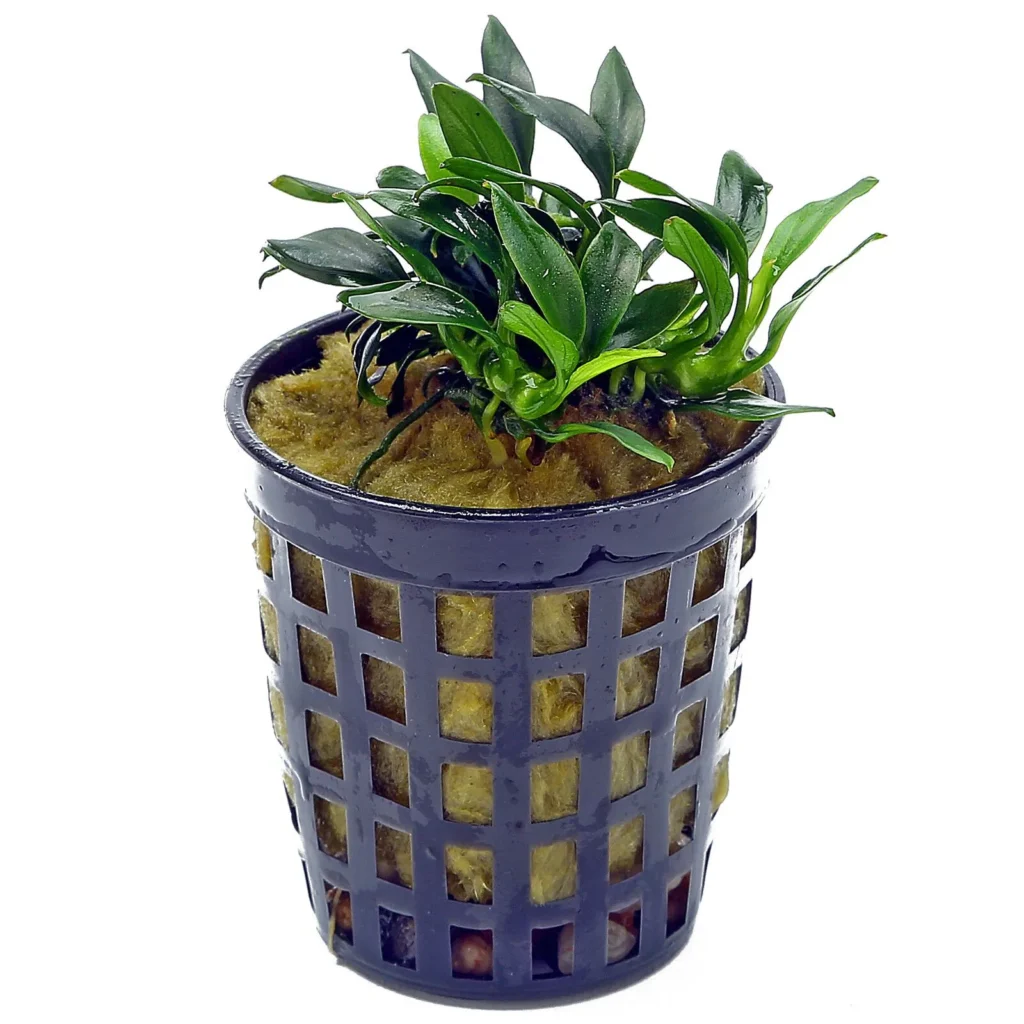
- Height: 2-4 inches.
- Growth Rate: Very slow.
- Features: Anubias Pangolino is a miniature variety with small, elongated leaves.
Anubias Pangolino, a miniature marvel, boasts small leaves and an exceptionally slow growth rate. Perfect for nano aquariums, its diminutive size and intricate details make it a captivating choice in aquascapes.
17. Anubias Petite White
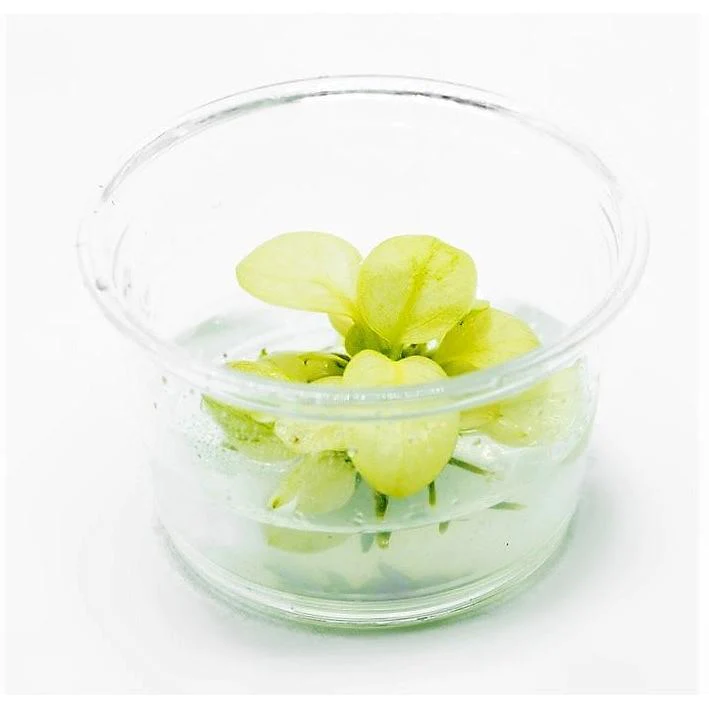
- Height: 2-4 inches.
- Growth Rate: Slow.
- Features: Anubias Petite White is recognized for its small size and white leaves.
Adding a touch of delicacy, Anubias Petite White features small, light green leaves with a subtle white pattern. Its slow growth rate makes it an elegant choice, introducing contrast and visual interest to aquariums and terrariums.
Selecting the Right Anubias Variety for your Planted Tank
Think about things like tank size, lighting, and intended placement when choosing an Anubias variety for your aquarium or terrarium. Anubias plants typically grow slowly, so you will need to be patient while you wait for them to fill out and establish themselves in your setup.
If you’re looking to pick up some Anubias, I’d recommend looking at your local fish store or on local aquarium groups. For more rare Anubias varieties, I’d recommend looking at a quality online aquatic plant retailer. Retailers that I’ve ordered from in the past and had good luck with include aquaticarts.com and buceplant.com.
In summary, these 17 popular Anubias varieties offer a diverse range of options for aquarists and terrarium enthusiasts. Whether you prefer larger, statement plants or compact varieties for smaller setups, there is an Anubias variety to suit every preference. Experiment with different combinations and arrangements to create a visually appealing and thriving aquatic environment.

